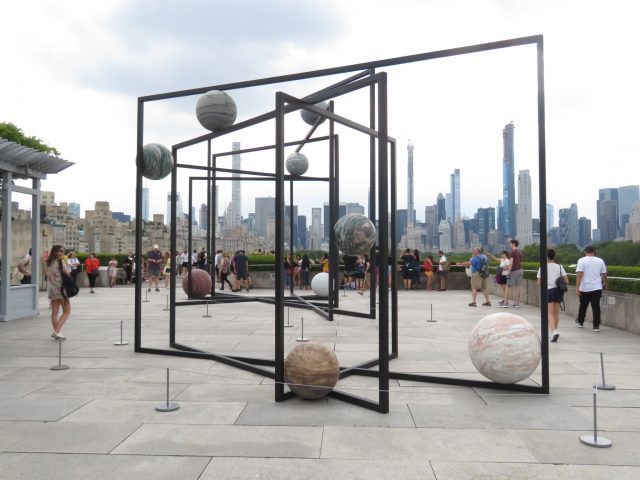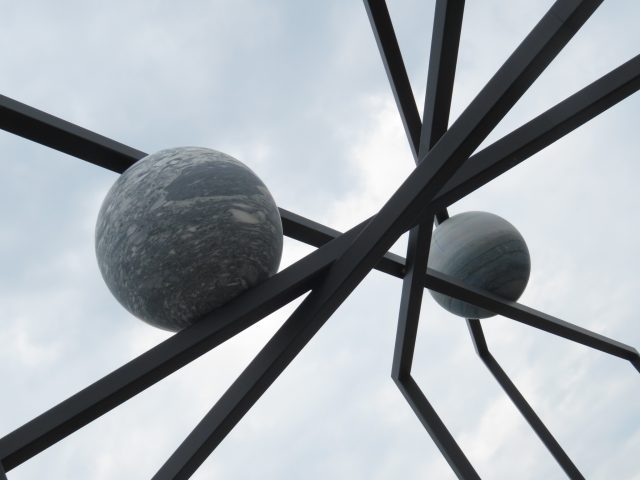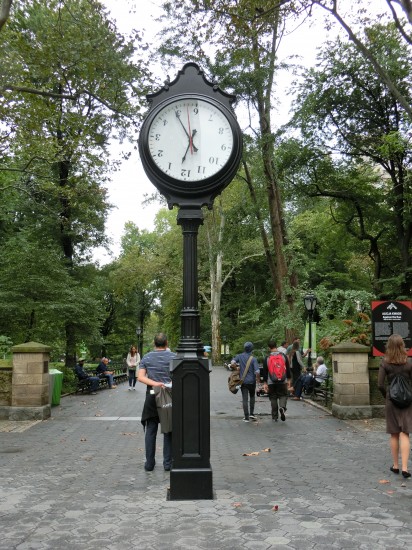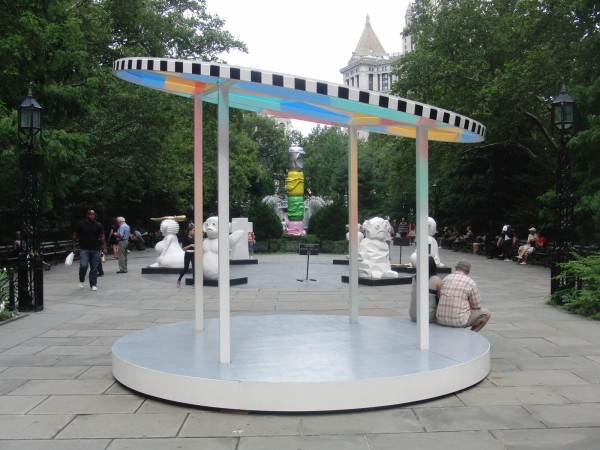
Alicja Kwade has created a unique solar system on the Met roof with Parapivot (photo by twi-ny/mdr)
Metropolitan Museum of Art, Met Fifth Avenue
The Iris and B. Gerald Cantor Roof Garden
1000 Fifth Ave. at 82nd St.
Daily through October 27 (weather permitting)
Recommended admission: $25 adults, children under twelve free
212-535-7710
www.metmuseum.org
parapivot slideshow
In 2015-16, Berlin-based Polish artist Alicja Kwade turned time upside down and backward in Against the Run, a reconfigured nineteenth-century-style city street clock that stood at the Scholars’ Gate entrance to Central Park. She now focuses her attention on space in her first solo US museum exhibition, Parapivot, continuing on the Met’s roof through October 27. Kwade’s construction consists of nine round, polished stones, evoking planets, precipitously balanced in interlocking steel frames. The daughter of a cultural scientist mother and an art historian father, Kwade’s works often involve scientific inquiry. Overlooking Central Park, Parapivot recalls such earlier pieces by Kwade as Ousia, Changed, Abakus, and But the Same, exploring issues of art, perception, and the natural world.

Polished spheres are like planets in steel-framed construction by Alicja Kwade (photo by twi-ny/mdr)
“The work is not an illustration of something we invented; it’s more like an illustration of us inventing,” Kwade says in a catalog interview with Met chief curator Sheena Wagstaff. “In other words, it’s more like a reflection of ourselves than of something we already did, a sense of what could be a system, what we do, and how we read things.” Thus, Kwade’s solar system will call up different things for different people as they walk around and through it. “I never want to have an answer,” she says in the catalog. “I want to have more questions, but not answers.”

